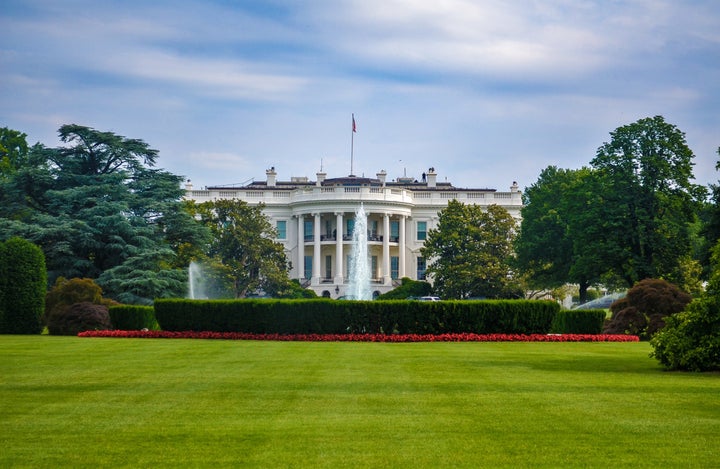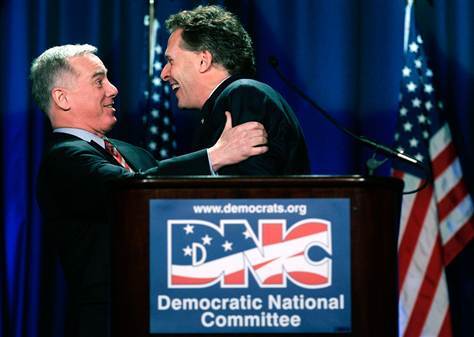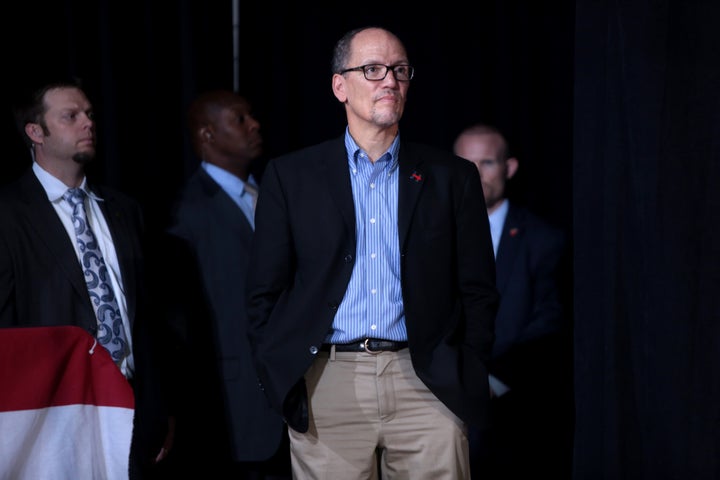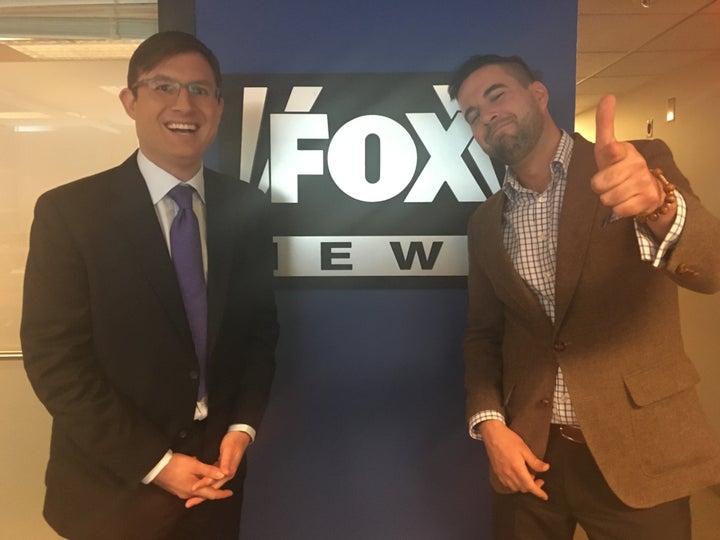Perspectives from three ex-staffers from 2016 election cycle on how the party can better wield it’s Data Science, Fundraising, and Television capabilities, respectively, in 2018 and beyond.

Hat Tip: Unsplash
Since election night last year, the Democratic Party has struggled with what can seem like existential questions about the future. It seems everyone has an opinion, about how we’ve lost all we’ve lost (over one-thousand elections eight short years) and why... and what we need need to do to win again.
The task of sorting through the perspectives now falls on newly-elected DNC Chair Tom Perez, the first Latino to hold the top job in the party’s 169-year history. The importance of Tom’s job can’t be understated. The road ahead to the 2018 midterm requires swift, decisive action to seize upon the Resistance movement sweeping the party base (and beyond) and to make Democrats great again in the eyes of American voters we’ve lost.
This post highlights the perspectives of three former DNC staffers from the 2016 cycle — a top data scientists and two top communications officials (one of the comms guys is me) — who wrote blogs this month opining on the party’s future. I’ll start with the Data Scientist.
ANDREW THERRIAULT, Former DNC Director of Data Science
Andrew Therriault once led the Democratic National Committee’s heralded data science team. He now works as Chief Data Officer for the City of Boston. Earlier this month, he wrote a piece on Medium that pulls back the curtains on what the party’s data science team does, how it could have been used better in 2016, and how it can be leveraged more-effectively to win elections in the future. A key premise to Theirriault’s analysis is that, “Data is a tool for campaigns, not a strategy.”
“Data can be used to produce good messaging, it can be used for bad messaging, and it can be used for no messaging at all. The data itself is agnostic on that decision.”
In short, he argues that it’s up to the messaging machine to wield data science like a micro-targeted sledgehammer, but that requires keeping scientists informed at every step of the party’s strategy for external communications that are used to reach voters.
What a DNC Data Science Team Does

Photo by Giles Lambert
We can run surveys to understand how the public sees the world, test messages to see which resonate most with voters, then help campaigns tailor those messages for particular audiences. This is not an alternative to the way messaging was done before the Obama campaigns, it’s just an evolution. The field of modeling and experiments grew directly out of more traditional survey research, and many of the people who have led campaign analytics programs (myself included) came out of the polling industry and see our work as a natural extension of that methodology.
Therriault gives the example of the campaign to stop Prop 32 in California. Basically, it started with the communications team giving the data scientists some messages to test their effectiveness amongst the proposed audience, presumably California voters.
How Data Science Helps Dems Win Campaigns

Photo by Torbak Hopper
In the case of Prop 32, Therriault writes:
We then ran a large-scale modeling survey which included experimental tests of the effectiveness of each of the proposed messages, both independently and as a counterargument to messages our opponents were likely to use. That helped us to narrow down those messages to the most effective set, and with additional data from another survey we were able to dig down into those results to identify the best messages to use with particular voters.
The approach worked. When the Democrats’ launched the campaign against Prop 132 in summer of 2012, polls projected the measure to succeed by 25 points. By November, Prop 132 was stopped by a margin of 13 points at the polls ... a huge turn around in a relatively short amount of time.
The Prop 32 campaign was a great example of how data and messaging can work in harmony with one another, and serves as a good contrast to what some are taking away from 2016’s results. The idea that data and messaging are somehow mutually exclusive is not only incorrect, it’s entirely backwards: campaigns are most effective when they combine strong messages with data-driven targeting. That was a winning recipe in 2008 and 2012, and it’s what our team hoped to repeat last year ...
Added bold for emphasis.
What Went Wrong in 2016?

Photo by David Everett Strickler
A reason, according to Therriault, for the DNC’s underperformance in the last election cycle was that the Data Science team that had been instrumental in the successes of 2008 and 2012 was left largely out of the loop in 2016.
Therriault notes that the division between the data scientists and the front-line communicators “on another floor 30 feet above” became immediately apparent during last summer’s Wikileaks scandal.
“We might as well have worked for a totally different organization ... There was not a single reference to our team or any of its members in even one of the stolen emails.”
After the primary, the Therriault notes that the Clinton team never included the scientists in any of the meetings where messaging decisions were being made, presumably based on his team’s modeling; but there was a divergence, he writes, between what the data told his team and the messages that were being deployed by the party.
“I do know what the DNC’s more limited data told us prior to the takeover, and I also know what their messaging strategy looked like in practice, and I can say that the former did not obviously recommend the latter.”
As Tom Perez rebuilds the DNC, he should consider the election results from when data scientists were integrated early and often into Democratic Party campaigns versus the results last cycle, when the team operated in a silo.
“In short, scientists working with spin-masters as meaningful contributors to the larger electoral game plan seems to be the winning approach.”
In short, scientists working with spin-masters as meaningful contributors to the larger electoral game plan seems to be the winning approach. Facilitating these interactions may require something as simple encouraging interdepartmental social events or continuing Debbie Wasserman Schultz’s famed veggie lunch club ... whatever works to foster at least an inter-departmental awareness of the priorities and capabilities of data science and how it’s informing party messaging. Recent history shows Democrats lose big when we keep our top nerds on the bench.
MARK PAUSTENBACH, Former DNC National Press Secretary
“Organizing doesn’t pay for itself.”
Paustenbach’s Medium post, which was written before Saturday’s election of Tom Perez as DNC chair, reviewed the three front runners for party’s top job — Keith Ellison, Tom Perez, and Peter Buttengieg — focusing on their national fundraising chops. None of the three had much to show.
Step #1: Learn from DNC’s Top Fundraising Campaigns
Now that Perez has been elected, it would be useful to dust off the party’s archives to discover what worked (and what didn’t) during the party’s more successful fundraising campaigns in recent memory.
A partial look at previous national party leaders is instructive: Former Gov. Howard Dean’s 50-state strategy helped boost state parties, attracting donations of all sizes to the cause of having a party with a nationwide presence and a national database of voters. Gov. Terry McAuliffe was an extraordinary leader and fundraiser and is credited with rebuilding and modernizing the DNC’s permanent headquarters (full disclosure: I also served at the DNC under both Dean and McAuliffe). Going further back, the job has been held by Democratic power brokers like Robert Strauss, who helped turn around the finances of an organization saddled with debt following losses at the presidential level in 1968 and 1972.

Howard Dean and Terry McCauliff, two former DNC chairs, embracing long ago.
Step #2: Dems Aren’t Alone In Progressive Fundraising
Beyond hitting the books and party sages for pro-tips from glorious campaigns of fundraising past, it’s important to note, as Paustenbach the new realities of a crowded fundraising field.
Some see fundraising as a dirty business but it’s an even more important skill now that the party has to compete for the attention of donors who are being courted by an expanding number of energized Democratically-aligned but external groups — and without an ally in the White House.

Women’s March on Washington, 21 January 2017
Step #3: Tap Tom’s Top Friends For Fundraisers
As Paustenbach notes, despite his limited experience collecting campaign cash, Tom’s ability to tap the top party voices to bring in the bacon may be key for Democrats to be competitive in 2018. Something tells me Barack, Hillary, Bernie, and Joe Biden aren’t going to stay off the party’s fundraising circuit for long. The sooner they can help fill the coffers, the better it will be for Tom’s chairmanship and for Democrats looking to run in 2018.

Photo by Gage Skidmore
PABLO MANRIQUEZ (me), Former DNC Broadcast Media Booker
Democrats can beat Trump at his own game, on television.
I couldn’t find any photos of Andrew Thierriault and me to accompany this post (the isolation he mentions feeling from the messaging machine would suggest fewer selfies between us), but here’s a memorable one of Mark and me after his national cable news debut on Fox News Channel.

Paustenbach and Pablo at the Fox News bureau on Capitol Hill in Washington, D.C.
During the 2016 election, I held two roles at the DNC. I started as Hispanic Media Director and was eventually promoted to Broadcast Media Director. Both roles required booking lots Democrats to appear on television, the former role focused on Spanish-language television and the latter role made me the point of contact between the party and every show on TV, radio, and podcasts.
Earlier this month I wrote a piece right here in The Huffington Post encouraging more Democrats to oppose on Fox News. Since then I’ve gotten a lot of feedback from television colleagues and party operatives, mostly positive, about the approach. The best response was from actor John Leguizamo, who was a bit skeptical:
A week after my piece went live the Democratic National Committee stepped up to the plate on ‘Tucker Carlson Tonight’ with Zak Petkanas, Director of the party’s famed “Trump War Room.”
It’s an incredible segment. Petkanas literally called Trump coward persecuting transgendered people, then backed it up with a barrage of facts and opinions. It was a largely emotionless conversation where Democrats booked an incredibly focused and informed spokesperson to take on an up-and-coming rockstar of Fox News primetime. Here’s the blog I wrote about Democrats opposing Trump on Fox News.
This morning, I also posted a second piece about Democrats on TV, this one advocating for the DNC to leverage a little-known television industry gimmick to ruin Donald Trump’s Sunday and set the tone for the week. I called it a FULL PEREZ but would be cool with calling it a Full Tom, too. Check it out here:
